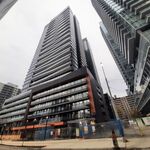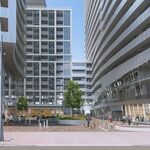Northern Light
Superstar
Quick question here for those more familiar w/railway construction practice than I;
Looking at the Small's Creek cross-section, the existing ballasted area is ~14M; if it comes up short its by a small amount, on fairly level ground, to the naked eye.
14M should be, to my understanding, what's required for 4 tracks.
So why does the scale of the intrusion/expansion seem so large relative to the space required?
Do they need extra room just for the noise barriers? I'm just curious, as it seems a bit odd to me.

@smallspy , @crs1026
Looking at the Small's Creek cross-section, the existing ballasted area is ~14M; if it comes up short its by a small amount, on fairly level ground, to the naked eye.
14M should be, to my understanding, what's required for 4 tracks.
So why does the scale of the intrusion/expansion seem so large relative to the space required?
Do they need extra room just for the noise barriers? I'm just curious, as it seems a bit odd to me.
@smallspy , @crs1026
Last edited:





